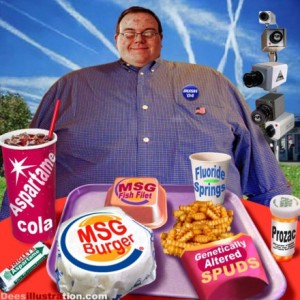I get lots of questions about why I’m such a huge stickler for chemical-free foods and why it matters… and instead of writing 3,500 words every time I’m asked, I wrote one 3,500-word blog post.
Surprise, surprise, no one was reading all that.
That’s okay. I’m breaking it up into a few parts that everyone will be able to digest slowly and properly (pun intended), and hopefully we can explore why healthier, cleaner, more chemical-free food choices are so important. It is critical that any person embarking on a clean eating journey have an understanding of why the journey is so vital to their success in losing weight.
Consider this the conclusion of the series.

So here we are, living in the new millennium. For breakfast, we’re eating cereal. For lunch, we give our kids lunchables. For dinner, we heat up a pot pie. (If you want a laugh, look at the ingredients list on the back of any of those.) For a drink, we have a capri sun or a coke. Instead of nutrient-filled calorie-light whole foods, we’re now indulging in calorie-heavy nutrient-light foods that’ve been mainly cooked FOR us. When we take in foods, our bodies are expecting a certain amount of nutrients and vitamins. If our body doesn’t get what it’s looking for fast enough, what happens? It compels you to eat more! Yes! Have you ever inhaled half a bag of wafers, only to be hungry again moments later? All that work your body put in to digest this vitamin-free food, only to find that there are no vitamins in it? Yes, it’s going to tell you to try again and eat something else.
The problem for many of us, is that because it’s so much easier and quicker to grab another processed food item instead of cooking.. we try to fix the problem with something that’d only make it worse. All the while scarfing down the calories, forgetting all the nutrients, and packing on the pounds while we’re at it. The convenience, the fact that very few of us know how some foods are cooked, let alone what the foods SHOULD consist of, has allowed us to eat much more with much less effort. Is that a bad thing? If you know how to moderate yourself, of course not. Many of us, apparently, don’t.
We have to scale back in a major way if we want to be healthy. If we truly seek to better our health and change our bodies for the better, we have to take control of the different elements that affect that, and that consists of both food and activity. You can burn what you eat, but if you aren’t eating the stuff that leaves you most vulnerable to overeating and malnutrition, then you don’t have to worry about burning it off. At all.
That being said …perhaps we should go back into history, during this February… and talk about what food used to look like for Black folks before processed food took hold?
